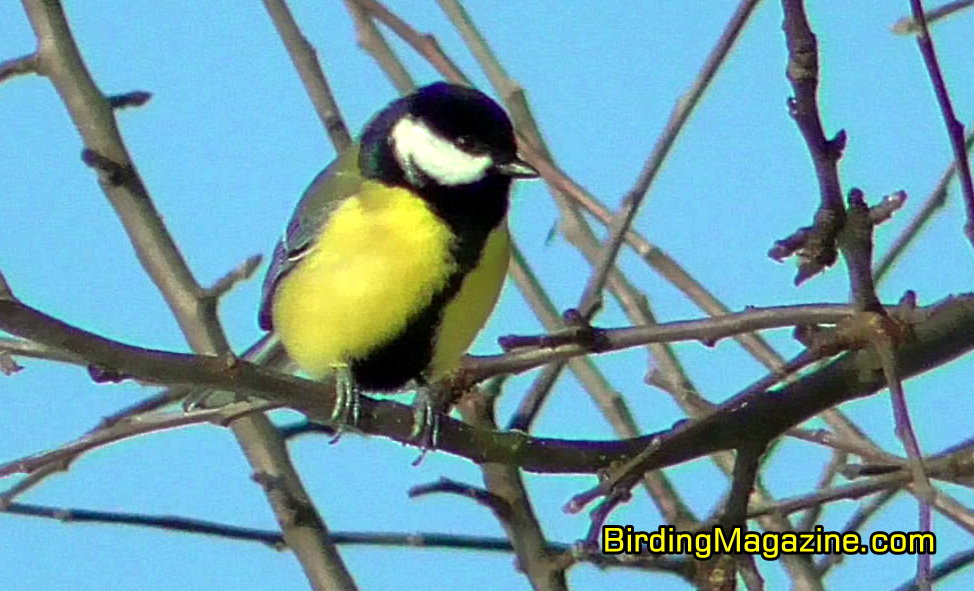The Great Tit (Parus Major) is a captivating songbird that has captured the attention of bird enthusiasts and researchers alike. With its striking black and white markings, vibrant yellow belly, and melodious song, this small avian species is a delight to observe in the wild. Found across a vast range spanning Europe, Asia, and parts of Africa, the Great Tit has adapted remarkably well to diverse habitats, including woodlands, gardens, and even urban areas.
In this article, we will explore the various aspects of the Great Tit’s life, from its physical description and mating behaviors to nesting habits and feeding preferences. Additionally, we will delve into its role in the ecosystem, the threats it faces, and its conservation status. So, let us embark on a journey to unravel the fascinating world of the Great Tit.
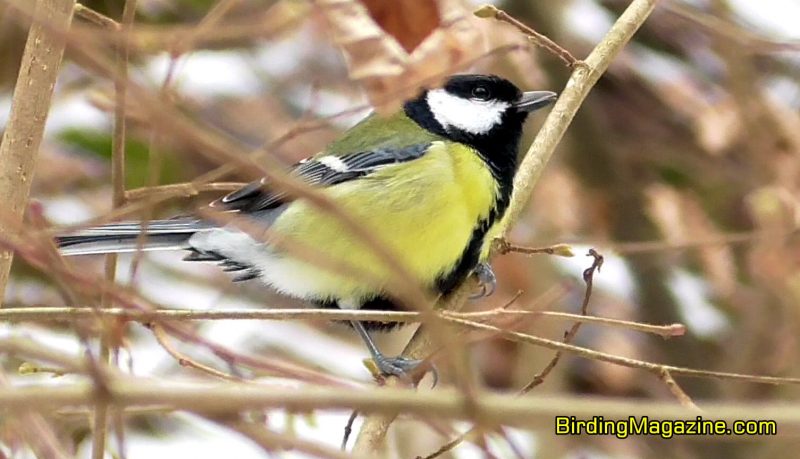
Description (How to Identify)
The Great Tit (Parus major) is a small songbird belonging to the family Paridae. It measures about 14 centimeters (5.5 inches) in length and has a wingspan of approximately 22 to 25 centimeters (8.5 to 9.8 inches). This bird has a distinctive appearance with a black head, white cheeks, and a prominent black stripe running down its chest, dividing the yellow belly from the greenish upperparts. The wings are bluish-gray, and the tail is bluish-gray with white outer feathers. The bill of the Great Tit is short and black, and its legs are also black.
Differences Between Males and Females (How to Distinguish)
Males and females of the Great Tit species are similar in appearance, making it challenging to differentiate them based on physical characteristics alone. However, in some cases, males may have slightly broader black breast stripes than females. To determine the sex of Great Tits more accurately, one would often rely on their behavior, such as courtship displays and vocalizations.
Range (Where it Naturally Exists)
The Great Tit is native to a vast range that spans across Europe, Asia, and parts of North Africa. It can be found from the British Isles in the west to Japan in the east. The species also inhabits regions such as Scandinavia, the Mediterranean, the Middle East, and Central Asia. Great Tits have been introduced to various other locations, including New Zealand, Australia, and parts of North America.
Habitats (Where It Tends to Live)
Great Tits are highly adaptable and can thrive in various habitats, ranging from woodlands and forests to gardens, parks, and even urban areas. They are commonly found in deciduous and mixed woodlands, where they can utilize tree cavities for nesting. Great Tits are also known to frequent gardens with mature trees and shrubs, providing ample foraging opportunities. In urban environments, they make use of nest boxes and bird feeders to supplement their natural food sources.
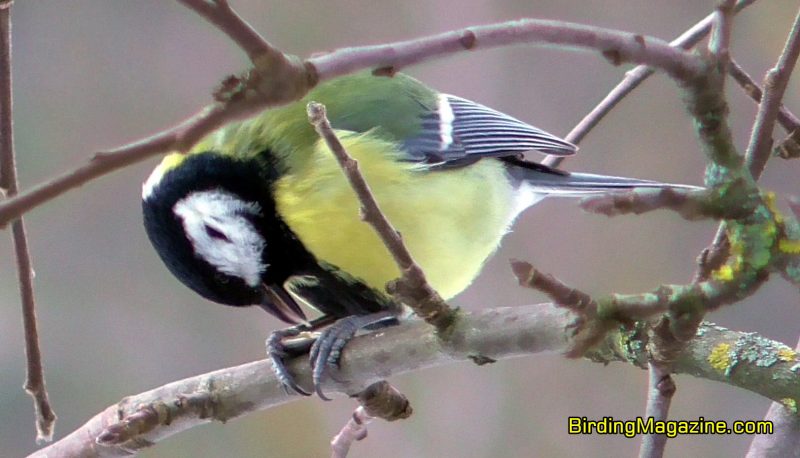
Feeding (What It Eats)
The diet of Great Tits primarily consists of insects, spiders, and other invertebrates. They are skillful foragers, adept at gleaning insects from leaves and branches, and hovering to catch insects mid-air. In addition to their insectivorous diet, Great Tits also consume seeds, nuts, berries, and fruits, particularly during the winter months when insect availability decreases. They are known to visit bird feeders for supplementary food, such as seeds, suet, and nuts.
Mating (How It Looks for a Mate)
During the breeding season, male Great Tits establish territories and engage in courtship displays to attract mates. These displays typically involve fluttering flights, where the male flaps its wings and fans its tail, accompanied by calls. Males may also perform “head-flagging,” a behavior where they raise their crest and display the contrasting black and white patterns on their head. Females assess these displays and vocalizations before choosing a mate.
Nesting (How and Where it Builds Nests)
Great Tits construct nests in tree cavities, crevices, and sometimes in nest boxes. The female is primarily responsible for nest-building, while the male assists by bringing materials. The nest is made of moss, leaves, grass, and bark, lined with softer materials such as feathers and hair. The female shapes the nest and creates a cup-like depression where she lays her eggs. The nests are typically well-hidden and often located in tree holes or cavities in walls and rocks.
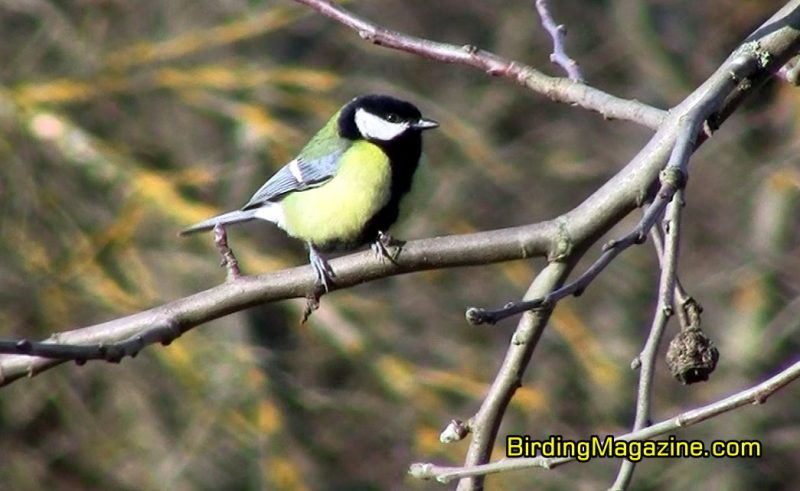
Eggs (How Many Eggs It Lays, What They Look Like and Who Looks After Them)
A typical clutch of Great Tit eggs consists of 6 to 12 eggs, although smaller clutches of 4 to 5 eggs or larger ones of up to 15 eggs have been observed. The eggs are white or creamy-white with fine reddish-brown speckles. The female incubates the eggs for approximately 13 to 15 days, during which time the male provides her with food. Once the eggs hatch, both parents share the responsibility of feeding and caring for the nestlings.
Fledglings (How They Differ from Adults and How Long It Takes Them to Learn the Skills)
After hatching, the nestlings are naked and helpless, relying entirely on their parents for warmth and food. They develop rapidly, and within 15 to 18 days, their feathers grow, and they leave the nest. The fledglings initially have a shorter tail than adults and exhibit a more muted coloration, with less prominent black and white markings. The parents continue to feed and teach the fledglings essential skills, such as foraging techniques and vocalizations, for a few weeks until the young birds become independent.
Song and Call (What They Sound Like)
Great Tits are known for their wide repertoire of songs and calls. Their song is a distinctive series of clear, ringing notes, often described as “teacher-teacher-teacher” or “tea-cher-tea-cher.” The song is loud and melodic, with variations in pitch and rhythm. Great Tits also have various calls, including warning calls, contact calls, and alarm calls. These calls differ in tone and intensity, serving different purposes such as communication within flocks or alerting others to potential dangers.
Predators (Who Are the Greatest Threats)
The Great Tit faces several predators throughout its range. Natural predators include birds of prey such as Sparrowhawks and Eurasian Sparrowhawks, which may prey on adult Great Tits and their fledglings. Additionally, mammals like squirrels, weasels, and domestic cats are known to raid nests and pose a threat to eggs and nestlings. Nest predation by species like snakes and martens is also a concern.
Conservation Status
The Great Tit is widespread and generally considered a species of least concern on the International Union for Conservation of Nature (IUCN) Red List. It has a vast range, stable population, and adapts well to human-altered environments. However, local declines can occur due to habitat destruction, pesticide use, and climate change. The availability of suitable nesting sites, such as tree cavities, can also affect their populations.
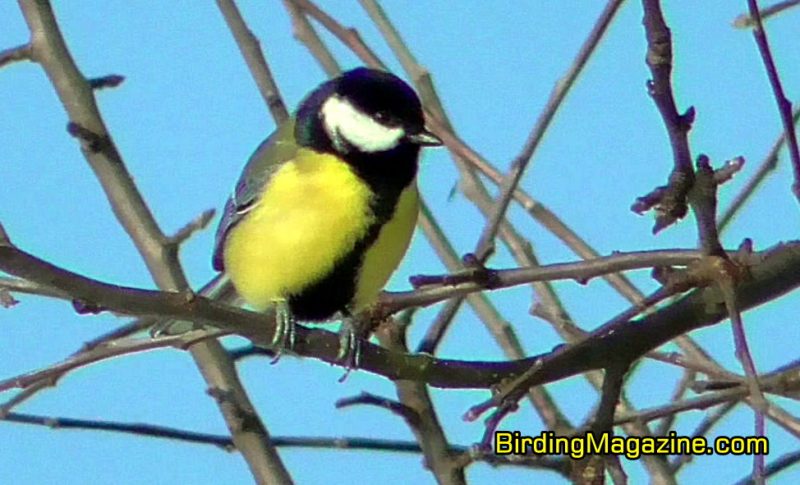
Similar Species
The Great Tit has several closely related species that share similar characteristics. Some of these species include the Blue Tit (Cyanistes caeruleus), Coal Tit (Periparus ater), Willow Tit (Poecile montanus), and Crested Tit (Lophophanes cristatus). These species often coexist in similar habitats and can be distinguished from each other by variations in plumage patterns, colors, and song characteristics.
Conclusion
The Great Tit, with its charismatic appearance and enchanting song, holds a prominent place among avian species. From its distinctive black and white markings to its adaptability in various habitats, this small bird has successfully carved out a niche for itself in the natural world. Its diligent nest-building, nurturing care for its offspring, and skillful foraging techniques showcase the intelligence and resourcefulness of this species. However, as with many other wildlife, the Great Tit faces challenges, including habitat loss, predation, and potential impacts of environmental changes. It is crucial that we continue to appreciate and protect the habitats that support the Great Tit and implement conservation measures to ensure its survival. By understanding and conserving this remarkable bird, we not only contribute to the preservation of biodiversity but also enrich our own lives by experiencing the wonders of nature through the lens of the Great Tit.
